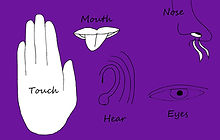The next Rfashion guide on clothes is pants. Here you learn how to draw two type of different pants. The ordinary jeans and skinny jeans.
The next Rfashion guide on clothes is pants. Here you learn how to draw two type of different pants. The ordinary jeans and skinny jeans.
The next Rfashion guide on clothes is pants. Here you learn how to draw two type of different pants. The ordinary jeans and skinny jeans.
How to draw a fashion model. A fashion model is the first key step to becoming a fashion designer. Where one can draw their clothes and show over.
How to draw a fashion model. A fashion model is the first key step to becoming a fashion designer. Where one can draw their clothes and show over.
Show not Tell: Bring the Story to Life


In this writing guide, you will learn about using show and tell in creative writing, when to use them and how to use them.
Show not tell a concept in creative writing, where you allow your readers to experience the story.
Showing not telling, show your character or your act and telling you to explain them. To learn about descriptions or conversation head to Imagery: Turn Word into Image and To Said or Not to Said
Show
Show, description describing what's happening. Think about yourself; you don't tell someone your actions; you show them. There are three ways you show: Setting, Person, Speech, and Emotion.
Setting
You are describing the setting show your reader and how your scene reactions in the settings. This imagery in eyes and ears. As if the reader is traveling inside the story.
Example: Snow fell lightly as the cold wind blowing the snow everywhere, snowflakes cover Max's short brown hair from the neck down as every roof in town turn them white.
For a person, emotions and speech are one and the same but different pending on your character.
Person Reaction
How characters their actions are up to the author. What your show in any way. Here are the two main ways of reaction.
Facial expressions: a move of the lip, the eye, and eyebrows
Example: Eye widely opens, looking at the monster, it walked closer and closer.
Her eyes showing, she is shocked and maybe frighten by the monster as it walks near her.
Body language
Example: Max crosses his arm and turns his back to this friend.
In this example, Max's body language show at he did want anything to do with this.
Speech, how and the way your characters say is a part of show. In said or not to said, use emotion or action can show how your character feels as he or she is talking to the other characters throughout your story.
Speech through emotions
Eyebrows bent, staring at Max, “How could you do this to me.”
This you can see with this eyebrow bent your character is mad at the other.
Speech through actions
He whispered, “How could you do this to me.”
Here you see with the action of whispers; your audience knows he talks in a murmur.
Speech
Emotion
How your character or person feels to them at the time or place in your story. Through imagery in eyes, you will describe how they action through his, or their emotions express.
List of basic Emotions:
Surprise
Anger
Fear
Disgust
Happiness
Sadness
Tell
When not to show but to tell, Show is the most important thing in a story, but a writer knows when to show and when to tell in a story.
Example of telling:
Alex was happy.
You see you know Alex is happy. But you did have any details or expressions to indicate his happiness.
Tell is good when you are moving the story moving.
Example:
Max and Z walk outside the store.
This show that your characters move are to their next place or scene




